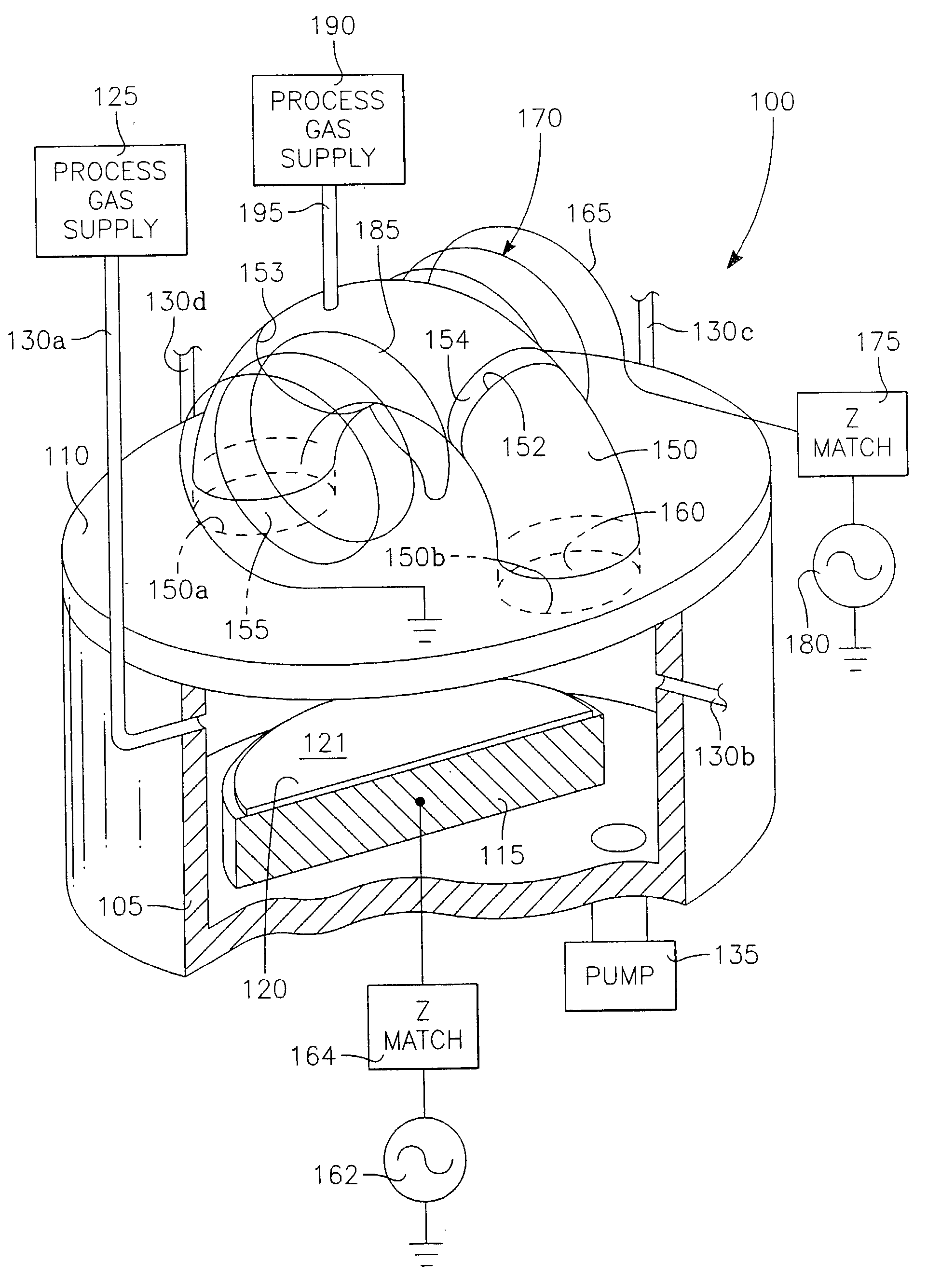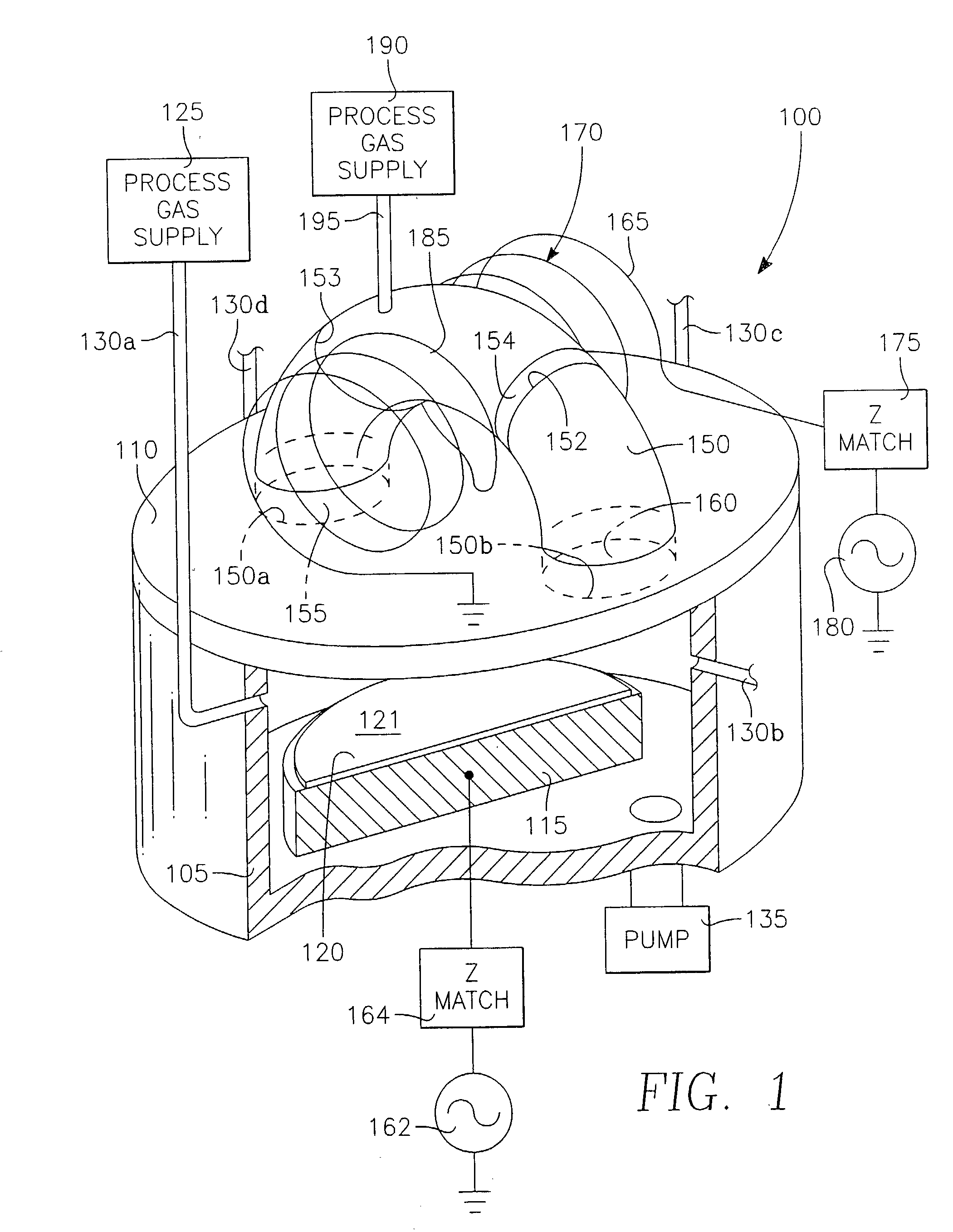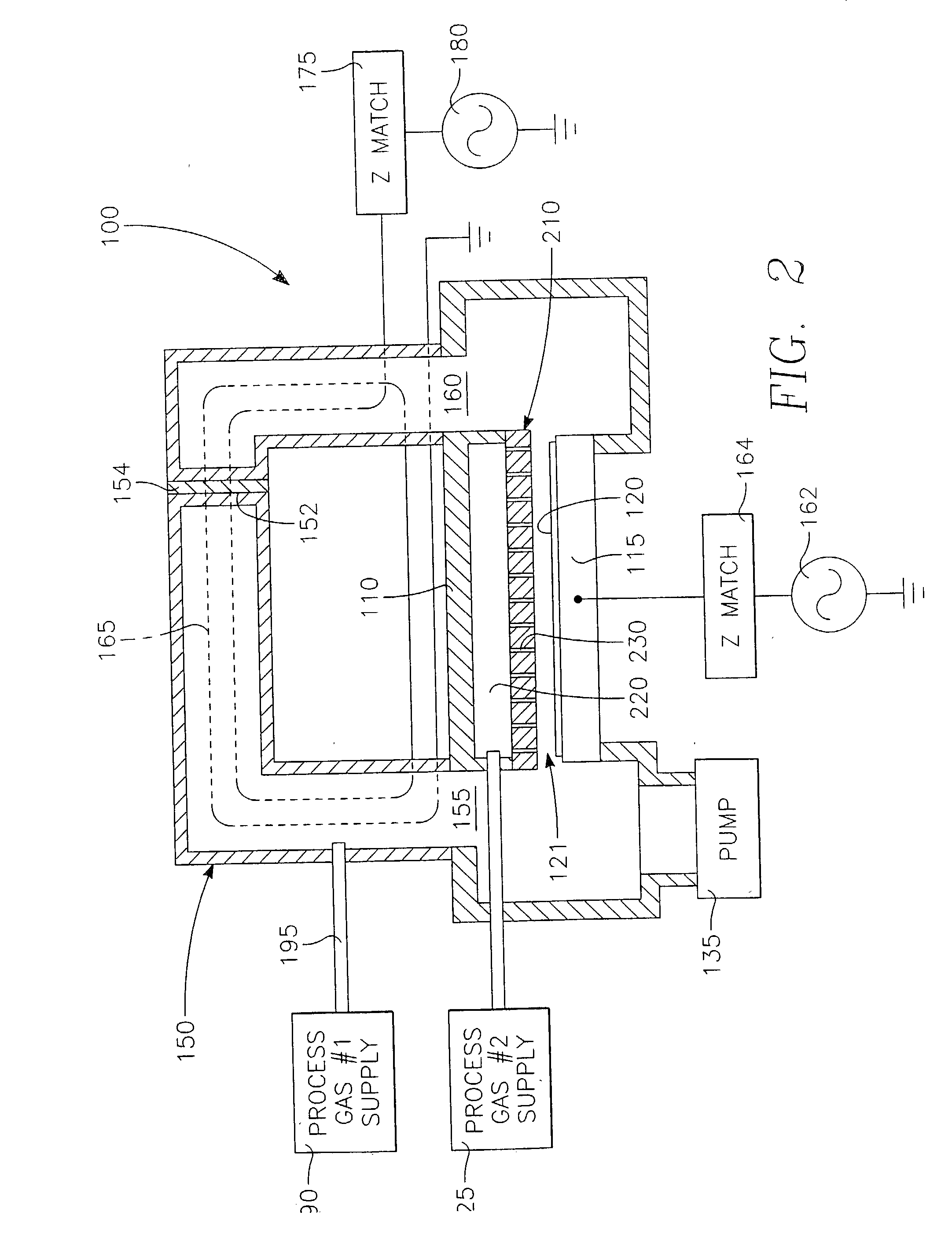Externally excited torroidal plasma source with magnetic control of ion distribution
a plasma source and magnetic control technology, applied in the field of externally excited torroidal plasma sources with magnetic control of ion distribution, can solve the problems of slow and therefore relatively less productive, difficult to process plasma such devices, and increased work difficulty, so as to reduce the path length-dependent loss of plasma ions and reduce surface area loss. , the effect of short path length
- Summary
- Abstract
- Description
- Claims
- Application Information
AI Technical Summary
Benefits of technology
Problems solved by technology
Method used
Image
Examples
Embodiment Construction
[0204] An etch process was conducted on blanket oxide wafers at a chamber pressure of 40 mT, 4800 watts of 13.56 MHz RF bias power on the wafer pedestal and 1800 Watts of RF source power applied to each reentrant tube 150 at 11.5 MHz and 12.5 MHz, respectively. The magnetic field produced by the electromagnet assembly 4430 was set at the following levels in successive steps: (a) zero, (b) 6 Gauss and (c) 18 Gauss (where the more easily measured axial magnetic field component at the wafer center was observed rather than the more relevant radial component). The observed etch rate distribution on the wafer surface was measured, respectively, as (a) center low with a standard deviation of about 2% at zero Gauss, (b) slightly center fast with a standard deviation of about 1.2% at 6 Gauss, and (c) center fast with a standard deviation of 1.4%. These examples demonstrate the ability to provide nearly ideal compensation (step b) and the power to overcompensate (step c).
[0205] To test the ef...
PUM
| Property | Measurement | Unit |
|---|---|---|
| plasma current | aaaaa | aaaaa |
| plasma current | aaaaa | aaaaa |
| diameter | aaaaa | aaaaa |
Abstract
Description
Claims
Application Information
 Login to View More
Login to View More - R&D
- Intellectual Property
- Life Sciences
- Materials
- Tech Scout
- Unparalleled Data Quality
- Higher Quality Content
- 60% Fewer Hallucinations
Browse by: Latest US Patents, China's latest patents, Technical Efficacy Thesaurus, Application Domain, Technology Topic, Popular Technical Reports.
© 2025 PatSnap. All rights reserved.Legal|Privacy policy|Modern Slavery Act Transparency Statement|Sitemap|About US| Contact US: help@patsnap.com



